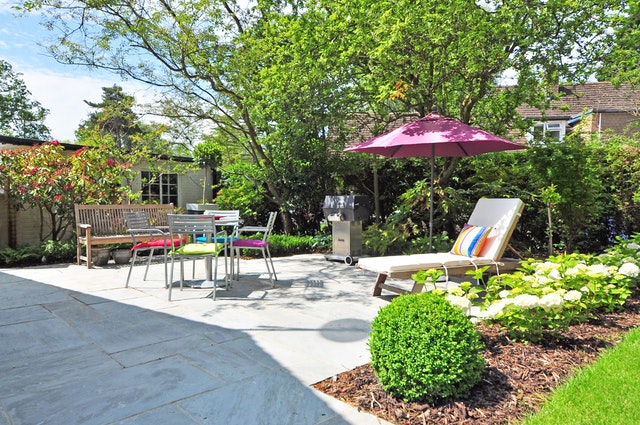 If you’ve had to watch your parents transition into assisted living, you may have no desire to call such a place home. You are not alone. According to the Aging in Place Housing Survey conducted by the American Association of Retired Persons (AARP), more than 90 percent of seniors want to remain in their home.
If you’ve had to watch your parents transition into assisted living, you may have no desire to call such a place home. You are not alone. According to the Aging in Place Housing Survey conducted by the American Association of Retired Persons (AARP), more than 90 percent of seniors want to remain in their home.
Many survey respondents said that they would rather use nursing home funds towards purchasing a home that is suited for aging in place or making accessible home modifications.
You’ve probably heard the buzzwords — aging in place, non-assisted living, universal design — these phrases mean the same thing: growing older in your home. Today, home modifications can help you continue to live in your home as you age. Plus, aging-in-place home modifications are much less expensive than moving into a nursing home or assisted living facility.
The problem is that most existing homes are not conducive to aging in place. There are more than 100 million homes in the United States. However, only one percent of them are currently set up for accessibility. Fortunately, there are a variety of home modifications that you can do to make any home more accessible. Here is a handy guide to accessible home modifications.
Think About Your Future Needs
The first step in making sure your home is suited to aging in place is to consider how your needs might change in the future. Everyone’s situation is different.
If you have a chronic illness, such as diabetes or heart disease, it is best to talk with your doctor to determine how these health issues might make it hard for you to live on your own in the future. Consider what modifications you’ll need to make to ensure that your home will suit your future needs.
For example, if you are thinking of buying a new home with an upstairs, you might use the upper part of the house for your home office now and convert the area into a caregiver’s quarters in the future.
Consider a First-Floor Master Suite
An essential home modification for aging in place is first-floor living. Although you might not have mobility issues now, hip replacements and other problems that affect mobility are frequent with increasing age.
Plus, a first-floor suite can increase the value of your home should you sell in the future. According to data from Builder Online, out of the best-selling new home floor plans, more than 83 percent feature accessible master suites.
Choose Slip-Resistant Flooring
Falls are a serious threat to the independence and health of older adults. They are the leading cause of injuries among Americans ages 65 and older. That is why it is so important to take steps to reduce the likelihood of a fall.
One of the easiest modifications that you can make in this area is to choose slip-resistant flooring. Cork and bamboo flooring are both popular for aging in place as they are softer and thus more forgiving during a fall.
These are just a few of the aging in place modifications that you can make to your home. There are many others. The important thing to remember is that you don’t have to sacrifice lifestyle or luxury to have a home that is also accessible.
Many of the above modifications can be made anytime and can help enhance the beauty and comfort of your home.
 Last week’s economic releases included readings on new and pre-owned home sales and the Federal Open Market Committee’s customary post meeting statement. Fed Chair Jerome Powell gave his first press conference as Chair of the Federal Reserve and FOMC. Weekly readings on mortgage rates and first-time jobless claims were also released.
Last week’s economic releases included readings on new and pre-owned home sales and the Federal Open Market Committee’s customary post meeting statement. Fed Chair Jerome Powell gave his first press conference as Chair of the Federal Reserve and FOMC. Weekly readings on mortgage rates and first-time jobless claims were also released. In a hot real estate market, agents often tell buyers they must expect to make multiple offers before one is accepted. Disappointment may be the new normal rather than an exception. The stress of repeated rejections isn’t easy, so be prepared.
In a hot real estate market, agents often tell buyers they must expect to make multiple offers before one is accepted. Disappointment may be the new normal rather than an exception. The stress of repeated rejections isn’t easy, so be prepared. When you are purchasing a home, your lender may recommend you obtain a mortgage pre-approval before you find the home of your dreams. There are some benefits to being pre-approved before you find a home, but oftentimes, people confuse pre-qualifications with pre-approvals.
When you are purchasing a home, your lender may recommend you obtain a mortgage pre-approval before you find the home of your dreams. There are some benefits to being pre-approved before you find a home, but oftentimes, people confuse pre-qualifications with pre-approvals. The oft-repeated maxim that there is never a second chance to make a great first impression is especially true when it comes to real estate. Street appeal may focus on a dramatic approach to the front door, but prospective buyers will be especially “wowed” by an appealing back yard.
The oft-repeated maxim that there is never a second chance to make a great first impression is especially true when it comes to real estate. Street appeal may focus on a dramatic approach to the front door, but prospective buyers will be especially “wowed” by an appealing back yard. Several generations ago, lenders required home buyers to have a 20 percent down payment in order to get a mortgage. While there were a few options out there for people who couldn’t save this substantial amount, the reality was that for the majority of people, the 20 percent down was a requirement.
Several generations ago, lenders required home buyers to have a 20 percent down payment in order to get a mortgage. While there were a few options out there for people who couldn’t save this substantial amount, the reality was that for the majority of people, the 20 percent down was a requirement.